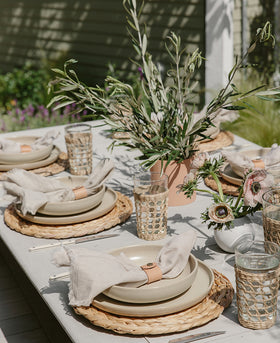
Thụy Ứng: A Horn Carving Legacy
The village of Thụy Ứng in Hanoi is renowned for its centuries-old tradition of crafting exquisite products from mother of pearl and buffalo horn. These intricate handicrafts have gained international acclaim for their beauty and craftsmanship, earning Thụy Ứng the well-deserved title of "the pearl of Vietnamese handicrafts."
Thụy Ứng village is located in Thanh Oai district, Hanoi, Vietnam. It is known for its traditional craft of making horns and mother of pearl products.
The craft has been practiced in the village for over 400 years, originated in the reign of King Le Trung Tong in the 1500s. Throughout history, Vietnamese people came up with the idea of using mother-of-pearl to inlay beautiful religious objects. It has been said that a man once went to the village of Thuy Ung to learn the craft of making horn combs. He then created a hair comb with a piece of blue mother-of-pearl beautifully inlaid on it. The custom of making buffalo horns and mother-of-pearl perfectly integrated there.

Mother of Pearl
Mother of pearl, the iridescent inner shell lining of oysters and other mollusks, has been prized for its shimmering beauty since ancient times. In Thụy Ứng, artisans transform these natural treasures into a dazzling array of objects, including jewelry, decorative pieces, and functional items like tableware and musical instruments.
Buffalo Horn
Buffalo horn, a byproduct of Vietnam's buffalo farming industry, is another versatile material that Thụy Ứng artisans have mastered. They transform buffalo horns into a variety of products, including combs, hairpins, jewelry boxes, and decorative figurines.

The process of making buffalo horn and mother of pearl products in Vietnam is a meticulous endeavor that demands skill, patience, and a deep understanding of the material's properties. Each step in the process contributes to the creation of exquisite objects that embody the craftsmanship of Vietnam.
-
Material selection
The journey begins with the careful selection of raw materials, ensuring they are of the highest quality and suitable for the desired product.
-
The horns are sourced from local farms or from India and selected African nations.
-
People gather and clean the mother-of-pearl shells. These shells are typically collected from local oyster farms or from the shores of the Red River. Once collected, the shells are meticulously cleaned to remove any dirt or debris.
-
Cutting and Shaping
-
The skilled artisans begin the intricate task of shaping and carving. Using a variety of tools, including hammers, chisels, and machines, they meticulously transform the horn into the desired form, following traditional designs or incorporating innovative creations.
-
Once the shells are clean, they are cut into thin pieces using specialized tools. The artisans carefully select the most iridescent and flawless pieces of the shell, ensuring that the final product will have a beautiful and consistent shimmer.
3. Polishing
The final step involves polishing the products to a high shine, revealing its natural beauty and enhancing its durability. Artisans use fine abrasives and polishing compounds to meticulously smooth the surface, bringing out the rich luster and intricate patterns.

Conclusion
These exquisite handicrafts not only embody the creativity and skill of Thụy Ứng's artisans, but also serve as a tangible link to Vietnam's rich cultural heritage. They are cherished souvenirs for visitors from around the world, who appreciate the beauty, craftsmanship, and cultural significance of these unique creations.






